Taiqiang Wu
HaLoRA: Hardware-aware Low-Rank Adaptation for Large Language Models Based on Hybrid Compute-in-Memory Architecture
Feb 27, 2025Abstract:Low-rank adaptation (LoRA) is a predominant parameter-efficient finetuning method to adapt large language models (LLMs) for downstream tasks. In this paper, we first propose to deploy the LoRA-finetuned LLMs on the hybrid compute-in-memory (CIM) architecture (i.e., pretrained weights onto RRAM and LoRA onto SRAM). To address performance degradation from RRAM's inherent noise, we design a novel Hardware-aware Low-rank Adaption (HaLoRA) method, aiming to train a LoRA branch that is both robust and accurate by aligning the training objectives under both ideal and noisy conditions. Experiments finetuning LLaMA 3.2 1B and 3B demonstrate HaLoRA's effectiveness across multiple reasoning tasks, achieving up to 22.7 improvement in average score while maintaining robustness at various noise levels.
LLM-Neo: Parameter Efficient Knowledge Distillation for Large Language Models
Nov 11, 2024Abstract:In this paper, we propose a novel LLM-Neo framework that efficiently transfers knowledge from a large language model (LLM) teacher to a compact student. Initially, we revisit the knowledge distillation (KD) and low-rank adaption (LoRA), and argue that they share the same paradigm. Inspired by this observation, we explore the strategy that combines LoRA and KD to enhance the efficiency of knowledge transfer. We first summarize some guidelines for this design and further develop the LLM-Neo. Experimental results on compressing Llama 2 and Llama 3 show that LLM-Neo outperforms various baselines. Further analysis demonstrates the robustness of the proposed LLM-Neo on variants of LoRA. The trained models have been available at \href{https://huggingface.co/collections/yang31210999/llm-neo-66e3c882f5579b829ff57eba}{this repository}.
Autoregressive Models in Vision: A Survey
Nov 08, 2024
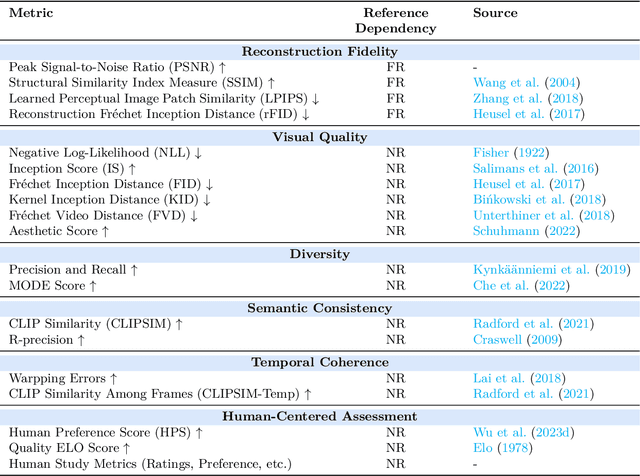

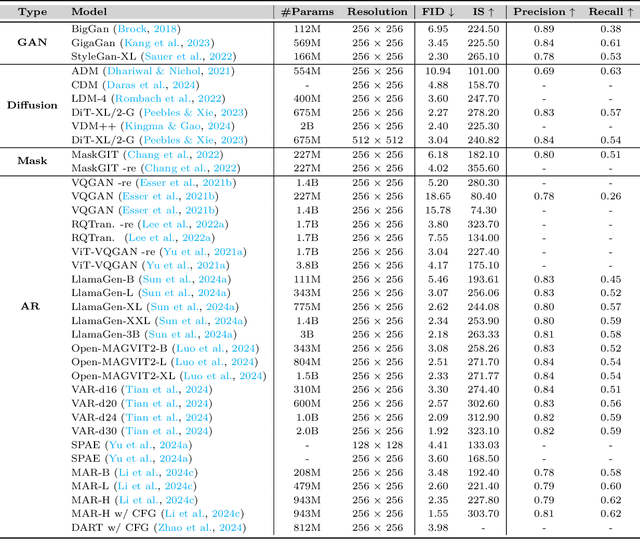
Abstract:Autoregressive modeling has been a huge success in the field of natural language processing (NLP). Recently, autoregressive models have emerged as a significant area of focus in computer vision, where they excel in producing high-quality visual content. Autoregressive models in NLP typically operate on subword tokens. However, the representation strategy in computer vision can vary in different levels, \textit{i.e.}, pixel-level, token-level, or scale-level, reflecting the diverse and hierarchical nature of visual data compared to the sequential structure of language. This survey comprehensively examines the literature on autoregressive models applied to vision. To improve readability for researchers from diverse research backgrounds, we start with preliminary sequence representation and modeling in vision. Next, we divide the fundamental frameworks of visual autoregressive models into three general sub-categories, including pixel-based, token-based, and scale-based models based on the strategy of representation. We then explore the interconnections between autoregressive models and other generative models. Furthermore, we present a multi-faceted categorization of autoregressive models in computer vision, including image generation, video generation, 3D generation, and multi-modal generation. We also elaborate on their applications in diverse domains, including emerging domains such as embodied AI and 3D medical AI, with about 250 related references. Finally, we highlight the current challenges to autoregressive models in vision with suggestions about potential research directions. We have also set up a Github repository to organize the papers included in this survey at: \url{https://github.com/ChaofanTao/Autoregressive-Models-in-Vision-Survey}.
MCUBERT: Memory-Efficient BERT Inference on Commodity Microcontrollers
Oct 23, 2024



Abstract:In this paper, we propose MCUBERT to enable language models like BERT on tiny microcontroller units (MCUs) through network and scheduling co-optimization. We observe the embedding table contributes to the major storage bottleneck for tiny BERT models. Hence, at the network level, we propose an MCU-aware two-stage neural architecture search algorithm based on clustered low-rank approximation for embedding compression. To reduce the inference memory requirements, we further propose a novel fine-grained MCU-friendly scheduling strategy. Through careful computation tiling and re-ordering as well as kernel design, we drastically increase the input sequence lengths supported on MCUs without any latency or accuracy penalty. MCUBERT reduces the parameter size of BERT-tiny and BERT-mini by 5.7$\times$ and 3.0$\times$ and the execution memory by 3.5$\times$ and 4.3$\times$, respectively. MCUBERT also achieves 1.5$\times$ latency reduction. For the first time, MCUBERT enables lightweight BERT models on commodity MCUs and processing more than 512 tokens with less than 256KB of memory.
A Survey on the Honesty of Large Language Models
Sep 27, 2024



Abstract:Honesty is a fundamental principle for aligning large language models (LLMs) with human values, requiring these models to recognize what they know and don't know and be able to faithfully express their knowledge. Despite promising, current LLMs still exhibit significant dishonest behaviors, such as confidently presenting wrong answers or failing to express what they know. In addition, research on the honesty of LLMs also faces challenges, including varying definitions of honesty, difficulties in distinguishing between known and unknown knowledge, and a lack of comprehensive understanding of related research. To address these issues, we provide a survey on the honesty of LLMs, covering its clarification, evaluation approaches, and strategies for improvement. Moreover, we offer insights for future research, aiming to inspire further exploration in this important area.
LoCa: Logit Calibration for Knowledge Distillation
Sep 07, 2024Abstract:Knowledge Distillation (KD), aiming to train a better student model by mimicking the teacher model, plays an important role in model compression. One typical way is to align the output logits. However, we find a common issue named mis-instruction, that the student would be misled when the predictions based on teacher logits do not follow the labels. Meanwhile, there is other useful dark knowledge in the logits such as the class discriminability, which is vital for distillation. In this paper, we propose a simple yet effective Logit Calibration (LoCa) method, which calibrates the logits from the teacher model based on the ground-truth labels. The key insight is to correct the prediction (to address the mis-instruction issue) and maintain useful dark knowledge simultaneously. Our proposed LoCa does not require any additional parameters. Empirical results on image classification and text generation tasks demonstrate that LoCa can effectively improve the performance of baselines.
Mixture-of-Subspaces in Low-Rank Adaptation
Jun 16, 2024Abstract:In this paper, we introduce a subspace-inspired Low-Rank Adaptation (LoRA) method, which is computationally efficient, easy to implement, and readily applicable to large language, multimodal, and diffusion models. Initially, we equivalently decompose the weights of LoRA into two subspaces, and find that simply mixing them can enhance performance. To study such a phenomenon, we revisit it through a fine-grained subspace lens, showing that such modification is equivalent to employing a fixed mixer to fuse the subspaces. To be more flexible, we jointly learn the mixer with the original LoRA weights, and term the method Mixture-of-Subspaces LoRA (MoSLoRA). MoSLoRA consistently outperforms LoRA on tasks in different modalities, including commonsense reasoning, visual instruction tuning, and subject-driven text-to-image generation, demonstrating its effectiveness and robustness. Codes are available at \href{https://github.com/wutaiqiang/MoSLoRA}{github}.
Unchosen Experts Can Contribute Too: Unleashing MoE Models' Power by Self-Contrast
May 23, 2024



Abstract:Mixture-of-Experts (MoE) has emerged as a prominent architecture for scaling model size while maintaining computational efficiency. In MoE, each token in the input sequence activates a different subset of experts determined by a routing mechanism. However, the unchosen experts in MoE models do not contribute to the output, potentially leading to underutilization of the model's capacity. In this work, we first conduct exploratory studies to demonstrate that increasing the number of activated experts does not necessarily improve and can even degrade the output quality. Then, we show that output distributions from an MoE model using different routing strategies substantially differ, indicating that different experts do not always act synergistically. Motivated by these findings, we propose Self-Contrast Mixture-of-Experts (SCMoE), a training-free strategy that utilizes unchosen experts in a self-contrast manner during inference. In SCMoE, the next-token probabilities are determined by contrasting the outputs from strong and weak activation using the same MoE model. Our method is conceptually simple and computationally lightweight, as it incurs minimal latency compared to greedy decoding. Experiments on several benchmarks (GSM8K, StrategyQA, MBPP and HumanEval) demonstrate that SCMoE can consistently enhance Mixtral 8x7B's reasoning capability across various domains. For example, it improves the accuracy on GSM8K from 61.79 to 66.94. Moreover, combining SCMoE with self-consistency yields additional gains, increasing major@20 accuracy from 75.59 to 78.31.
Rethinking Kullback-Leibler Divergence in Knowledge Distillation for Large Language Models
Apr 03, 2024



Abstract:Kullback-Leiber divergence has been widely used in Knowledge Distillation (KD) to compress Large Language Models (LLMs). Contrary to prior assertions that reverse Kullback-Leibler (RKL) divergence is mode-seeking and thus preferable over the mean-seeking forward Kullback-Leibler (FKL) divergence, this study empirically and theoretically demonstrates that neither mode-seeking nor mean-seeking properties manifest in KD for LLMs. Instead, RKL and FKL are found to share the same optimization objective and both converge after a sufficient number of epochs. However, due to practical constraints, LLMs are seldom trained for such an extensive number of epochs. Meanwhile, we further find that RKL focuses on the tail part of the distributions, while FKL focuses on the head part at the beginning epochs. Consequently, we propose a simple yet effective Adaptive Kullback-Leiber (AKL) divergence method, which adaptively allocates weights to combine FKL and RKL. Metric-based and GPT-4-based evaluations demonstrate that the proposed AKL outperforms the baselines across various tasks and improves the diversity and quality of generated responses.
Recouple Event Field via Probabilistic Bias for Event Extraction
May 19, 2023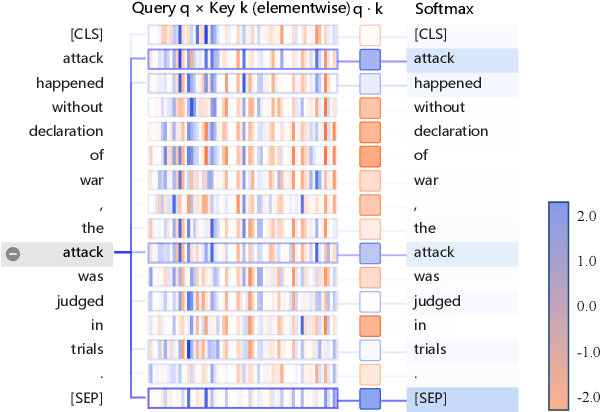
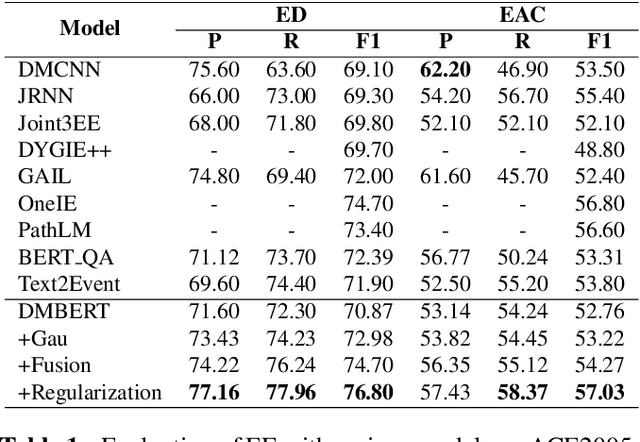
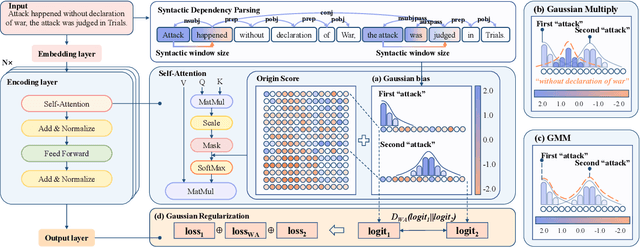
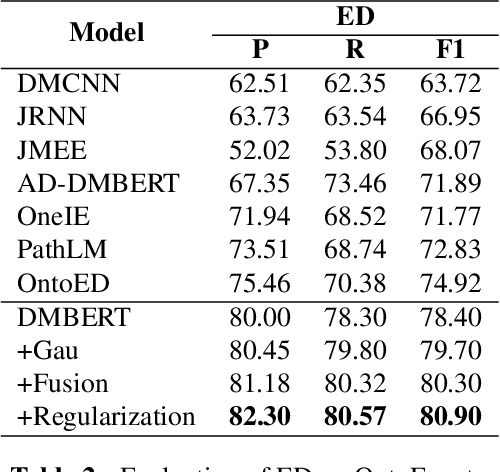
Abstract:Event Extraction (EE), aiming to identify and classify event triggers and arguments from event mentions, has benefited from pre-trained language models (PLMs). However, existing PLM-based methods ignore the information of trigger/argument fields, which is crucial for understanding event schemas. To this end, we propose a Probabilistic reCoupling model enhanced Event extraction framework (ProCE). Specifically, we first model the syntactic-related event fields as probabilistic biases, to clarify the event fields from ambiguous entanglement. Furthermore, considering multiple occurrences of the same triggers/arguments in EE, we explore probabilistic interaction strategies among multiple fields of the same triggers/arguments, to recouple the corresponding clarified distributions and capture more latent information fields. Experiments on EE datasets demonstrate the effectiveness and generalization of our proposed approach.
 Add to Chrome
Add to Chrome Add to Firefox
Add to Firefox Add to Edge
Add to Edge